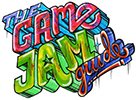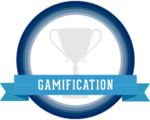Game-Based Learning
How can designing games about real world issues teach students empathy, systems thinking, and design thinking? This curriculum guide shares lesson plans and ideas for educators to implement created by experts who lead game jams themed on topics such as climate change, immigration stories and local voices, and future cities
Students and teachers can use this website to create their own games for the classroom and learning.
Here is a complied list of the top 100 games that can be used in game-based learning.
This website teaches teachers how to create effective games for their classrooms.
“Meaningful gamification is the use of gameful and playful layers to help a user find personal connections that motivate engagement with a specific context for long-term change.” Scott Nicholson has written an article that fully explains gamification and its significance in the classroom.
Here is a game design resource that is base on the Quest Schools’ model of game-based learning.
Students, parents, and educators can use this website to learn while using activities and games.
NMI is a research institute and they explain why game-based learning is important as well as how it affects the future of the classroom.
The MindShift Guide to Digital Games and Learning helps to explain the key ideas in game based learning, which include the “pedagogy, implementation, and assessment.”
Geometric games that are aligned with the common core for K-12.
Kodu Game Lab is a resource for students to use to learn how to make their own games. It is also useful for teachers who wish to create games to implement into their classroom.










